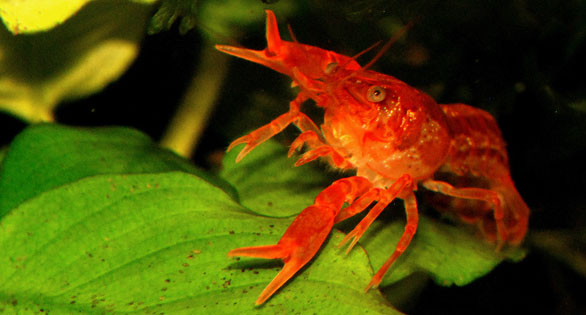
Male Dwarf Orange Crayfish, Cambarellus patzcuarensis “Orange,” an ideal invertebrate for a nano freshwater aquarium.
Lobster-like Mexican Native with Good Manners for a Nano Aquarium
By Rachel O’Leary
Excerpt from AMAZONAS Magazine, May/June 2013
The Dwarf Orange Crayfish, Cambarellus patzcuarensis “Orange,” is a petite and colorful crustacean that is not as well known to freshwater aquarists as it should be, but that makes a sassy and active addition to a nano aquarium. While some crayfish and “mini lobsters” can be destructive, this species has proved safe with plants, fishes, and other invertebrates.
In its wild form, it originates in Lake Patzcuaro, about 38 miles southwest of Morelia in Central Mexico. It is thought that the first orange offspring originated from a pair of hobbyists from the Netherlands in the late 1990s. They started becoming available in the United States several years later, and are casually referred to as the CPO. ‘Cambarellus” is a diminutive species, reaching around 1.25” (3 cm) at the largest, and averaging about 1” (2.5 cm).
Its native water is relatively cool, averaging about 72 degrees, and is moderately hard. These crayfish do not require a heater, but because of their stature, any intake on a power filter should be covered with a prefilter sponge. CPO have an average lifespan of two years, with warmer temperatures accelerating their growth and breeding. Adult crayfish molt about twice a year, and young crayfish generally will molt every 3-4 weeks, until they hit maturity, at about .7”.
They are fairly easy to breed, the male pinning the female to the substrate and then placing his sperm packets near her seminal receptacle. In a matter of days to weeks, she will molt and then produce from 20 to 50 eggs, which she attaches to her pleopod and covers with a protective mucus. The female carries the babies, even after hatching, until they are ready to venture out on their own. The adults do not predate on healthy young, so the survival rate is high.
Feeding is very straightforward, with the crayfish readily taking most prepared or gelatinized foods. Specialized feeding is not required for the young, though as with all invertebrates, they are sensitive to water quality so care should be taken to not overfeed. They do well with a varied diet with both meaty (live or frozen worms and pellets designed for bottom feeders) and herbivorous foods (vegetables or algae-based foods), and appreciate having leaf litter for grazing. To keep colors bright, include occasional feedings of color-enhancing foods containing natural carotenoid pigments such as the astaxanthene found in Cyclop-Eeze.
While peaceful to other inhabitants, these crayfish can threaten each other especially after molting, so ample hiding places or cover should be provided utilizing plants, small stacked driftwood, or caves of clay or PVC. A pair can easily live in a five gallon (20-L) tank, or can be part of a larger, peaceful community of small fish and invertebrates.
About the Author
Rachel O’Leary lives in York, Pennsylvania and operates Invertebrates by Msjinkzd, specializing in hard-to-find nano invertebrates, fishes, and plants.

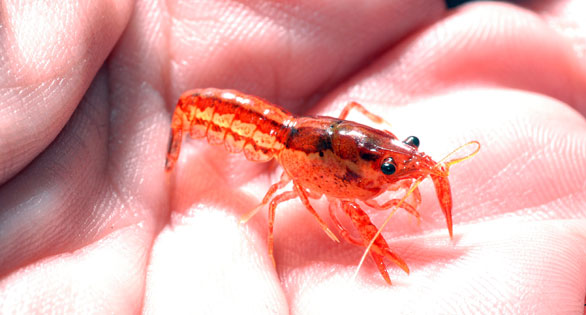
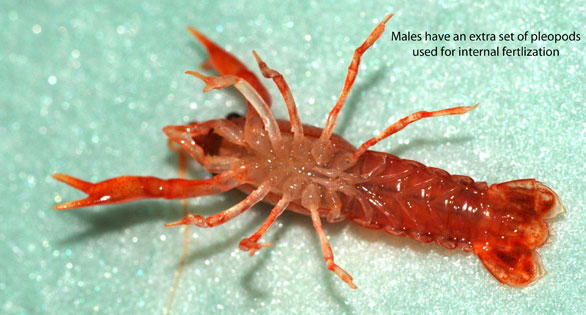
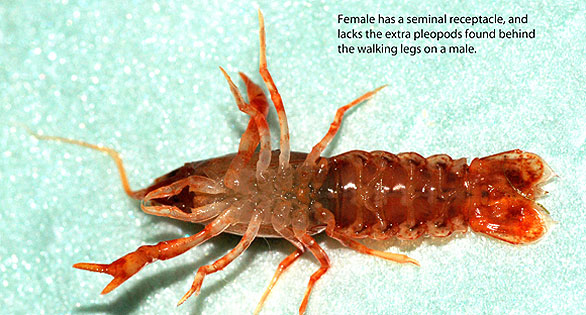
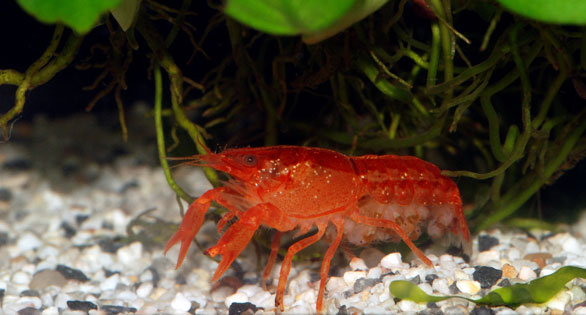





i am not very good with a computer and would like to order by phone.
Dave Richards, you can reach Amazonas customer service at 570.567.0424 to order over the phone. You can also get any subscription or back issue through our eCommerce site at https://portal.publishersserviceassociates.com/carts/reef2rainforest/
I live in Morelia and I didn’ know about this animal. Thanks, great information!